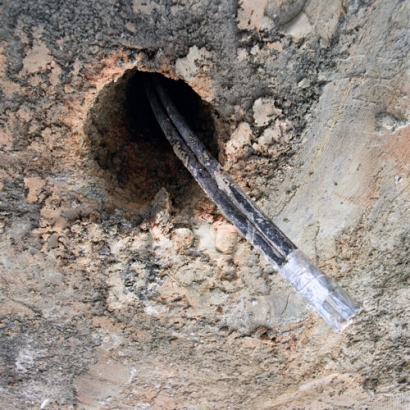
“With this success, the joint project between TU Bergakademie Freiberg and TU Dresden has made an important contribution to Germany’s energy transition, while demonstrating that the laboratory-developed technique is practicable in the field,” says Matthias Reich, Professor of Drilling Technology, Special Underground Construction Equipment, and Mining Machines at TU Bergakademie Freiberg.
Previously, the technique had only been used successfully in the lab. Now scientists have shown the process works in a real-world environment.
Using this technique, the cost of drilling deep boreholes in hard rock for geothermal energy could potentially be reduced to such an extent that the use of geothermal energy will become cost-effective for the environmentally friendly production of heat and power. The high cost of deep drilling has, up until now, prevented the technology from gaining traction in the marketplace.
With the electro-impulse technique, approximately 25 bolts of electricity (with some 500,000 volts) are projected into the rock per second. The bolts of electricity effectively blast drilling debris from the bottom of the borehole. In contrast to conventional drilling bits, this technique operates without either contact or moving parts, reducing wear costs considerably. The constant process of removing and changing drill bits is eliminated.
The project, aided by a grant from the German Federal Ministry for Economic Affairs and Energy, involves scientists from the TU Bergakademie Freiberg and TU Dresden as well as industry partners. Work on the test bore should continue until mid-October.
This time-lapse video from YouTube shows the construction of the drilling rig by the researchers (from August 21 to September 5, 2017). The film ends with the beige-colored drilling pipe being fed into the borehole.

